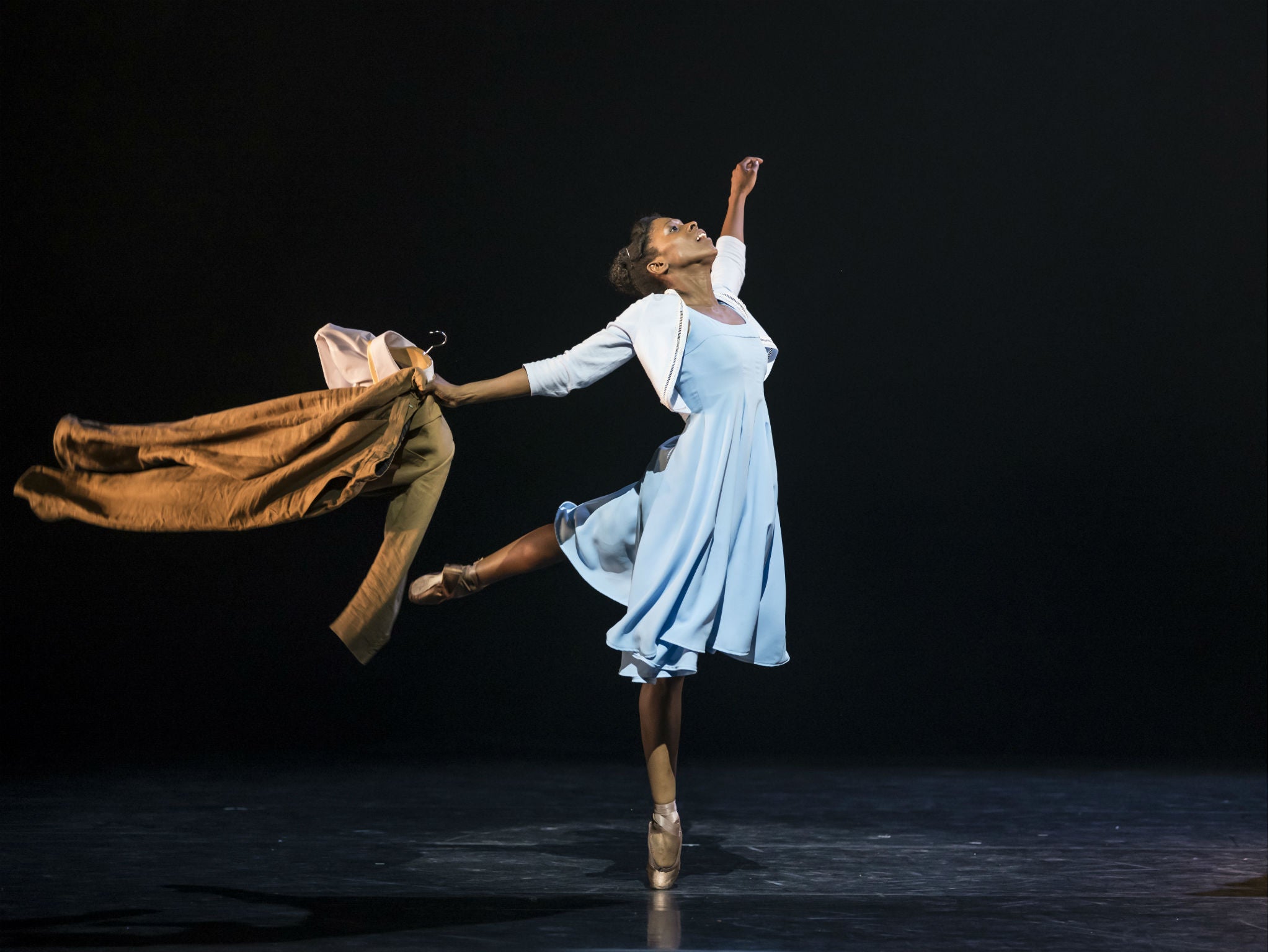The Suit/A Dream Within A Midsummer Night’s Dream, Barbican Theatre, London, review: An evening of triumphant ambition
Ballet Black, which celebrates dancers of black and Asian descent, perform a double bill of Cathy Marston’s 'The Suit' and Arthur Pita’s 'A Dream Within A Midsummer Night’s Dream'

Your support helps us to tell the story
From reproductive rights to climate change to Big Tech, The Independent is on the ground when the story is developing. Whether it's investigating the financials of Elon Musk's pro-Trump PAC or producing our latest documentary, 'The A Word', which shines a light on the American women fighting for reproductive rights, we know how important it is to parse out the facts from the messaging.
At such a critical moment in US history, we need reporters on the ground. Your donation allows us to keep sending journalists to speak to both sides of the story.
The Independent is trusted by Americans across the entire political spectrum. And unlike many other quality news outlets, we choose not to lock Americans out of our reporting and analysis with paywalls. We believe quality journalism should be available to everyone, paid for by those who can afford it.
Your support makes all the difference.Ballet Black’s new programme is surely the company’s finest yet. Cathy Marston’s taut new ballet The Suit shows tragedy bursting out of the seams of everyday life, while Arthur Pita’s A Dream Within A Midsummer Night’s Dream is a riotous take on Shakespeare, love and ballet. It’s an evening of such triumphant ambition that it’s easy to forget that this is a small company. They people the stage, conjuring two entirely different worlds, with just seven dancers.
Founded in 2001 by director Cassa Pancho, Ballet Black was created to offer role models for young dancers of black and Asian descent. It’s always punched above its weight in terms of choreography, commissioning new works from an impressive range of creators. Marston and Pita, both busy choreographers, are at the top of their game in their works for Ballet Black.
Inspired by Can Themba’s short story, The Suit is a tale of a collapsing marriage. Philemon finds his wife Matilda in bed with another man, who flees, leaving his clothes behind. As revenge, Philemon refuses to acknowledge the situation, but insists on treating the abandoned suit as an honoured guest.
Using music recorded by the Kronos Quartet, Marston starts with the couple’s apparently happy life. As José Alves’ Philemon gets up, he switches off an alarm clock evoked by a dancer’s fluttering hand; another echoes his movements as he shaves. Marston’s duets are richly characterised. After a fond goodbye to Philemon, Cira Robinson’s Matilda stretches in sensuous anticipation of her lover’s arrival. Undressing Mthuthuzeli November, she stretches out a long leg to nudge down his trousers, every movement slow and heated.
Discovered, Robinson looks sick with horror, doubling over with humiliation and shame. Forced to take the suit out to a dance, she twists and turns away from her community. Marston underlines on the South African setting of Themba’s story, with vivid period social dances. When Philemon dances with Matilda, their slow move back to intimacy is a reminder of past happiness – until the suit makes its awful return. Alves is a heartfelt Philemon, while Robinson is magnificent as Matilda, going from abandon to despair.
Pita’s delightful Dream, created in 2014, starts as a formal tutu number. Then Isabela Coracy’s Puck, a psychedelic Boy Scout with any number of mind-altering enchantments, pops up to turn everything on its head. Marie Astrid Mence’s Hermia falls for Sakaya Ichikawa’s delighted Helena, turning virtuoso footwork into giddy declarations of love. Robinson’s Titania finds unexpected tenderness with November’s Bottom. It’s a knockout, and the whole company is marvellous in it.
Ballet Black is on tour from 25 April (balletblack.co.uk)
Join our commenting forum
Join thought-provoking conversations, follow other Independent readers and see their replies
Comments